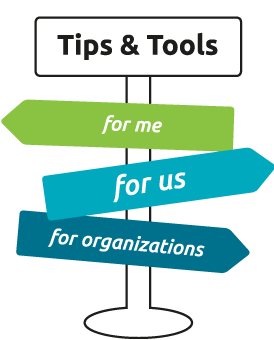Tips & Tools

7/19: Putting Pedestrians First
In the Dutch magazine ‘Verkeer In Beeld’ (19/#2) I wrote this article:
A Walking City for all
Always feel safe and at home, walking the streets. How to adapt projects accordingly? The first article in a series of three as my warming up for Walk21, the world congress in Rotterdam (7-10 October 2019).
In Dutch cities walkers have a lot to deal with cyclists. The great success of the bicycle in Amsterdam is reaching its limits, according to Marjolein de Lange and Fred Feddes in their recent book 'Bike City Amsterdam'. In the last chapters the word 'pedestrian' appears more and more often. If the Dutch cities wish to reach a 'next level', a new approach is needed. Increasing crowds mean, according to the authors, "a social task including young people, elderly and people without a cycling culture". The city of the future is above all a city that gives its feet plenty of space.
Tools for walking
To embed walking in the daily life of as many people as possible, tools are available. I mention some of them.
Walking networks
Creating walking networks for cities that connect important locations and have good grid systems are first things needed. Public authorities can guarantee as many walking distances as possible, including safe access to neighborhoods and buildings. In street maintenance, walking is the number one priority.
Design for all
Every building or environmental plan is based on 'Design for all' as a quality measure for as much walking space as possible. This means creating streets and routes, seen through the eyes of an eight-year-old walking child and also of an eighty-year-old. When both feel at ease, the space is usually suitable for almost everyone. Regardless of age, gender, status or health condition.
Lubricant
Users know obstacles and often know good solutions. An effective approach is the neighborhood survey. Neighbors talk to each other, inspect routes and make suggestions for improvement. They take pictures, indicate exactly what can be improved and how. They also record their positive experiences, because nothing motivates more than applause! The proposals are delivered to neighborhood managers or area owners. The citizens group oversees proper implementation and repeats the inspection, for instance every year. In all this, social media act as a lubricant.
Support system
"Walking becomes self-evident and an easy choice, that's the goal". Pedestrian expert Rob Methorst will soon provide policymakers with a complete system that supports, seduces and stimulates. His analysis is part of his PhD research at TU Delft. He lifts the veil, the first preliminary results. "Anyone who strives for better walking opportunities takes as a start the needs of people, their abilities and their roles. And maps out the limitations that are experienced".
Extras
According to Methorst, nine of the seventeen million Dutch people actually need an extra push in the right direction. He also counts all children and seniors among them. "More than 40 percent of our population has restrictions that encourage them to choose alternatives to walking or not going out of their homes. For just over 10 percent, their participation in social life is currently severely restricted".
Please better counting
A good perspective is better based on opportunities and limitations of walkers than on current statistics. Methorst sees that walkers are insufficiently counted. "The traffic world and the Central Bureau of Statistics (CBS) use data from the OViN study that are based on standard travel motives," he explains. "I say: take also into account other factors than just travelling meters from origin A to final destination B. For example sojourning in public spaces, often related to walking".
Walking the dog forgotten
Methorst discovered many missing data in the statistics: walking the dog, taking long walks, strolling foreign visitors and tourists. The calculations also miss playing, waiting for someone or for public transport, enjoying the sun, having a chat, playing sports, walking the dog. "Think also of circulating, such as the last meters in delivering parcels and catering. Also the meters that builders and other workers make are unseen".
Bicycle city also for walkers
Back to Feddes and De Lange. They see the removal of the moving and parked car (called the 'elephant in the room') as an important solution. This provides space for pedestrians and cyclists. They also emphasize the importance of more coalitions between cyclists and others. They say: "It's time for a new, generous cycling morality that takes into account fellow cyclists, pedestrians and also people in cars”.
(July 1, 2019)
Overview Blogs- News autumn 2024
- my Ebook for free now
- 3/20 'Being outside crucial in corona times'
- 2/20: Parkrun: getting overweight people walking
- 2/20: Ban on e-peds in some countries, good for walkers
- 1/20: Walker picking up street garbage, wins Green Top 100
- 9/19 Sensor city and our feet
- 8/19: The Dutch Healthy City
- 7/19: Putting Pedestrians First
- 3/19: Doctors walking their patients
- 1/19: People do buy my book
- 11/18: My book is born 2
- 9/18: My book is born
- 7/18: Temporary ban electrical steps
- 6/18: Amsterdam children healthier thanks to local policy
- 5/18: New tip, new tool
- 4/18: Walk-to-Work Day
- 3/18: Happy Mobility
- 2/18: Dutch elections: more benches in the streets
- 1/18: On foot in the new year
- 10/17: 'Embedded' with the Placemakers
- 9/17: Positive reactions on my website
- 7/17: Cyclists` advocacy for walkers
- 5/17: Walk to Work Day successful
